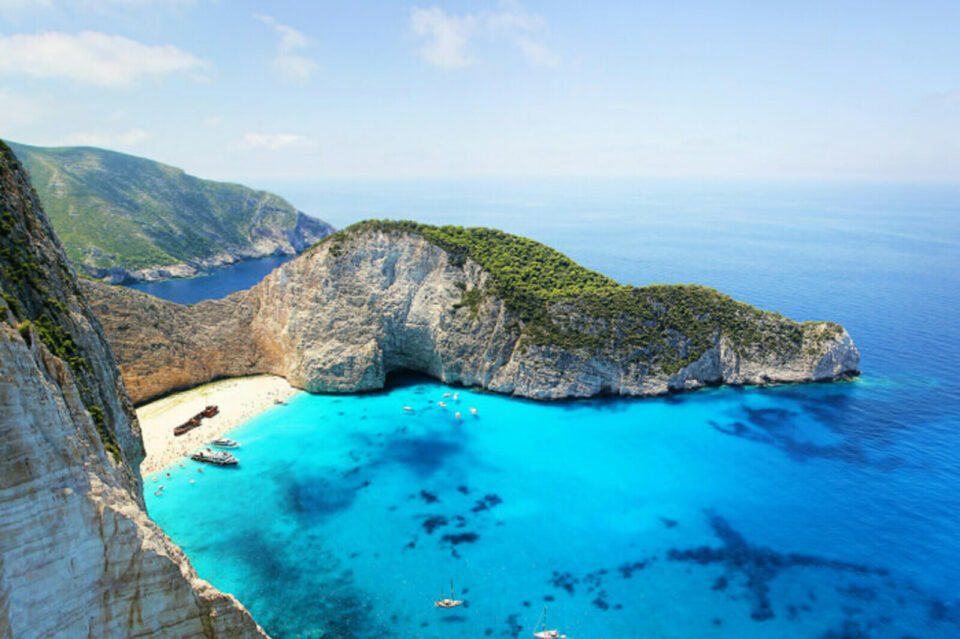Many consider the Greek islands to be the best place on earth. Here, historical monuments, emerald seas, beautiful nature, cozy coastal taverns, sandy beaches, and romantic sunsets exist harmoniously side by side. Of course, the peak tourist season is in the summer months, but there are plenty of activities during other seasons too. In autumn and spring, it’s not as hot. This time is perfect for hiking on mountain trails. You can swim in the sea until mid-November, and many hotels have their own pools where the swimming season lasts all year round. Winter in Greece is not too cold, with January averaging around +16 °C, and February not dropping below +14 °C. Rain is quite rare.
There are well-established ferry connections between the islands, allowing you to travel around Greece even by rented car.
Santorini. Paradise on Earth

This is the dream of all romantics. Advertising slogans promise “the most breathtaking sunsets on earth with a view of the caldera” (you’ll have to learn this word here). A caldera is what’s left of a volcano after an eruption. The local volcano erupted four thousand years ago, destroying half of the then-civilized world, but leaving behind those very sunsets.
Unfortunately, the romance quickly evaporates when you see the local hotel prices, restaurant menus “with a view of the caldera,” and crowds of other romantics like you. But there is a way out for budget tourists: buy a bottle of local wine and sit somewhere on the edge of a cliff with the same view, or even better. You can also stay on the eastern “sunrise” side of the island and take the local bus for one and a half euros to see the “breathtaking sunsets.”
What can you do on Santorini besides watching postcard sunsets? You can take an excursion to that very volcano on a neighboring islet. Visit the archaeological museum in the island’s capital, Fira. Swim on the black volcanic sand beach on the eastern coast. Ride donkeys along the steep cliffs from Fira to the old port and back. And simply travel around the island from town to town, from beach to beach… The last piece of advice applies to any Greek island.
Skopelos and Skiathos. Mamma Mia
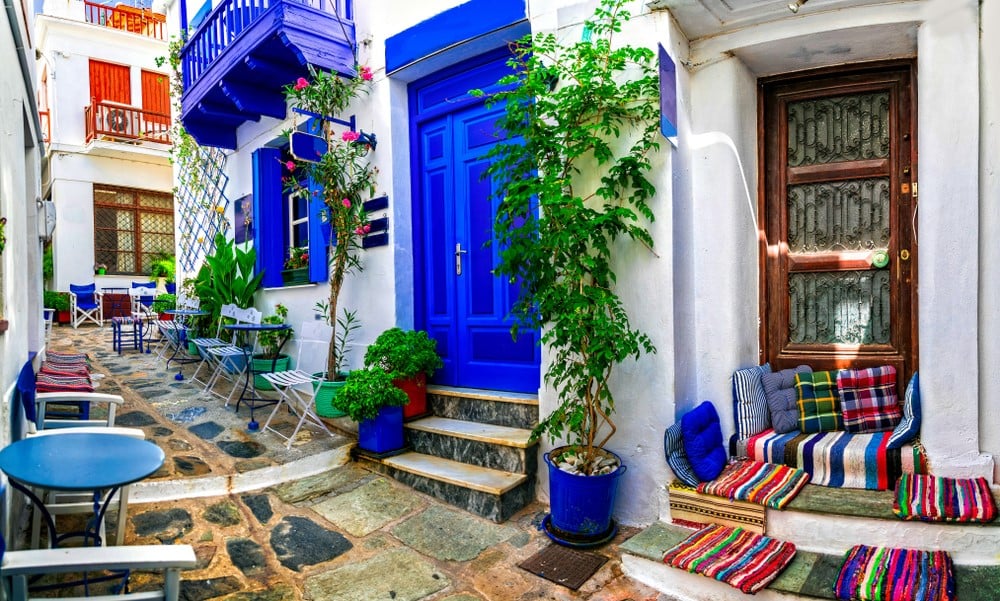
These two neighboring islands are part of the Northern Sporades archipelago. They were already popular with Europeans who know a thing or two about summer holidays, and after the release of the musical film Mamma Mia with music by ABBA, their popularity almost reached the level of Santorini. Most scenes were filmed on Skopelos, although the island is fictitiously named Kalokairi in the film. Tours of the musical’s filming locations are the most popular island attraction, but there are other delights as well.
Skopelos is famous for its ancient churches and chapels, of which there are about four hundred. The island’s hallmark is the church of Agios Athanasios, built in the 11th century on the top of a cliff overlooking a picturesque bay. And, of course, Mamma Mia was also filmed here.
It’s better to stay on Skopelos, as it is larger and more lively, and you can take day trips to Skiathos. Incidentally, in 2019, the American popular tourist magazine Condé Nast Traveler named the beaches of Skiathos the best in the world.
Lesbos: Exploring the Greek Island of History and Pride
Rhodes. The Capital of the Crusaders
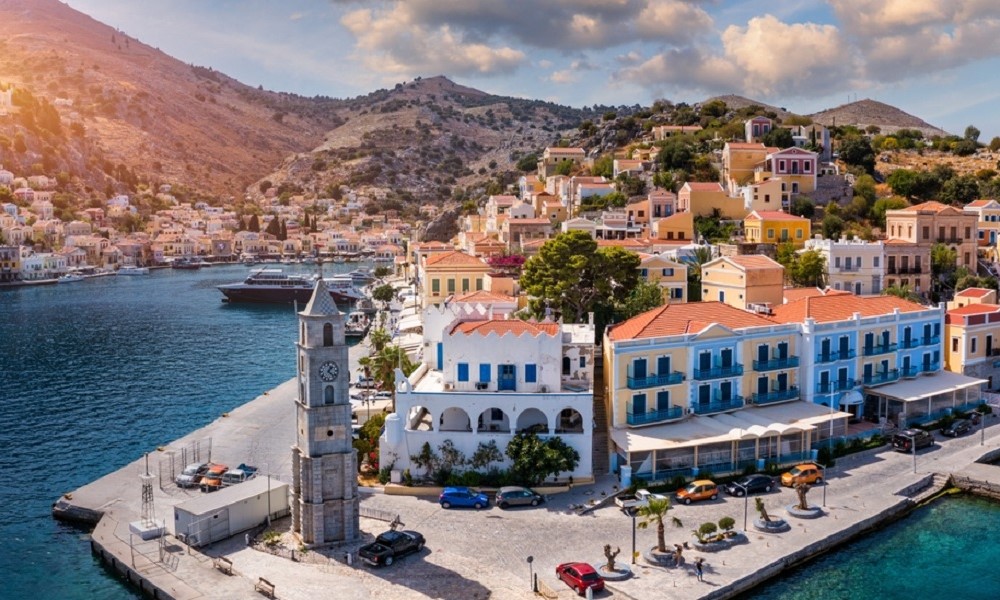
One of the seven wonders of the ancient world, the Colossus of Rhodes (a giant statue of the god Helios that greeted all ships entering the island’s port), was located here. Unfortunately, nothing remains of it today. But don’t despair. An excellent replacement is the Crusader castle built here in the 14th century (incidentally, stones from the same Colossus of Rhodes, which was destroyed by an earthquake in the 3rd century BC, were used in its construction). The Rhodes fortress is the island’s main attraction and is listed as a UNESCO World Heritage Site. You can wander around the fortress and its adjacent streets for hours.
Another island gem is the town of Lindos, standing on the shore of St. Paul’s Bay. It consists of a labyrinth of narrow streets, above which rises an ancient Greek acropolis, where enterprising Greeks transport tourists on donkeys.
Butterfly Valley Petaloudes, Tsambika Monastery, the picturesque Prasonisi cape where the waters of the Mediterranean and Aegean seas meet (often referred to as the “kiss of two seas”), the ruins of the Monolithos, Archangelos, and Kritinia castles, Mussolini’s abandoned villa, the colorful artist village of Fanes – these are just some of the must-see sites here.
By the way, in the 1970s, members of the band Pink Floyd used to hang out on Rhodes with their families. Try to find the villa in the village of Pefkos that belonged to David Gilmour. If you wish, you can even buy it. Buy, not rent, because such things should only have one owner.
Nisyros. Life on a Volcano
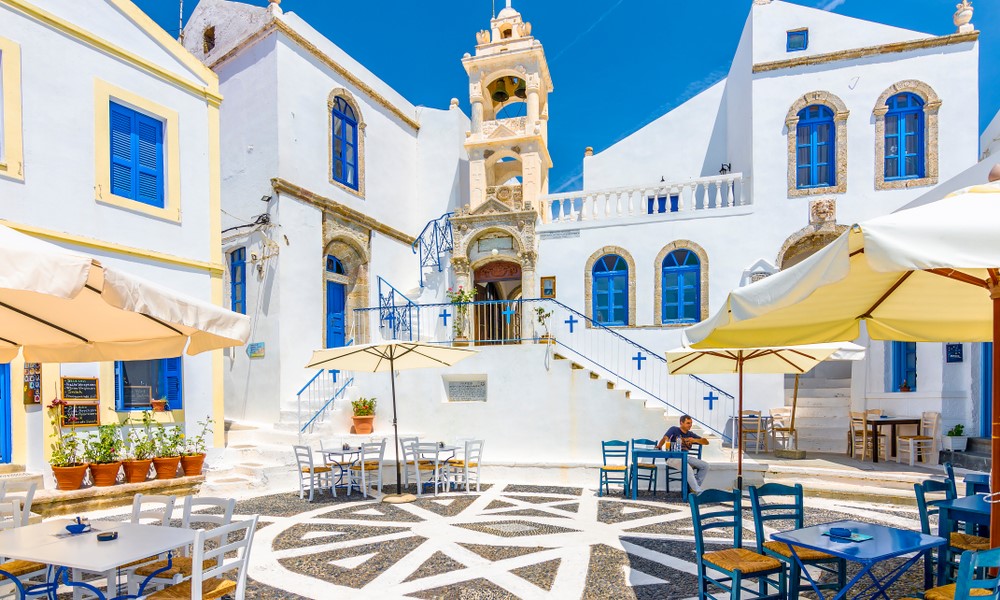
This is a very strange volcano. It’s as if it turned inside out. You don’t climb up to its crater, but descend into it. On a hot summer day, it’s an absolutely hellish heat here. Sulfur fumes from the underworld heat the already hot air, but the flow of tourists wanting to admire the anti-volcano does not cease. Tourists arrive here by boat even from neighboring islands – Kos, Rhodes, and Symi. Special buses run from the pier to the volcano.
But life on a ready-to-erupt volcano excites the imagination and intensifies the thirst for life. Treat yourself to a shot of aromatic ouzo or a glass of icy resinous retsina on the main square of the village of Nikia with a view of the smoking volcano far below on a hot summer afternoon. For the soul, you can visit the 11th-century Panagia Spiliani Monastery, which houses the miraculous icon of the Cave Virgin Mary. They say it helps with everything if you ask correctly. Every year on February 10 and August 15, thousands of believers flock to Nisyros to participate in the festival dedicated to this icon.
Patmos. The Homeland of the “Apocalypse”

John the Apostle wrote his “Revelation,” better known as the “Apocalypse,” here at the end of the 1st century, depicting the terrifying end of our world and the final battle of good and evil. In ancient Roman times, Patmos was an island where those displeasing to the emperor were exiled. John the Apostle was one of these exiles.
At the highest part of the island is the Monastery of Saint John the Theologian. Founded in the 11th century, it resembles an impregnable knight’s castle and is one of the largest in Greece. Around it sprawls Chora – the labyrinthine capital of the island, consisting of cobbled streets, narrow arched passages, and whitewashed houses with flat roofs for collecting rainwater. Just below the monastery is the cave where John the Apostle lived and wrote his “Revelation.” Visitors are shown the stone bed on which the evangelist slept and the crack in the rock he supposedly made with his head when he jumped up in the middle of the night, hearing the Divine Revelation in a dream, which he immediately recorded.
But Patmos is not only about religion. The island is perfect for riding a moped, exploring its cozy beaches, and sitting in a seaside restaurant in the evenings, with tables right by the water or even in it.
Hydra. Leonard Cohen, Donkeys, and Bicycles

The island of Hydra is absolutely idyllic. Its name often omits the first letter to avoid unpleasant associations. It is relatively close to Athens (only two hours from the port of Athens, Piraeus). Therefore, Hydra is very popular with those who want to experience island life but do not want to stray far from civilization. It is one of the few Greek islands where car traffic is prohibited: you can only move around Hydra on foot, by bicycle, or horse-drawn transport.
Leonard Cohen plays the role of the island’s genius loci. He bought a house here early in his career and lived in it for several years. On Hydra, he wrote his most famous song “Hallelujah,” but of course, not only it. The street where he lived is now named after him. There aren’t many sights here, but people come not for them, but for the wonderfully relaxed and homely atmosphere that reigns on this car-free island.
Kefalonia. Ionian Islands
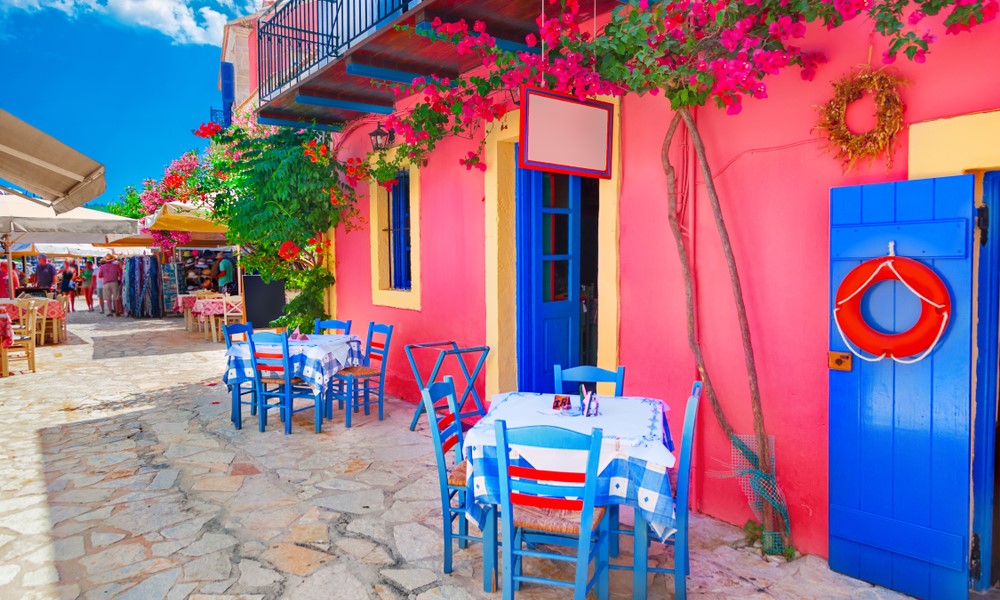
The islands located to the west of mainland Greece are considered to have a more attractive climate than those to the east. There is more greenery here, and it’s not as hot. But while the island of Zakynthos, with its world-famous Navagio Bay, and the island of Corfu have long been popular and well-traveled by Russian tourists, Kefalonia, lying just south, still awaits its pioneers. Incredibly beautiful caves, semi-abandoned mountain monasteries, taverns with two or three tables by the water, wild beaches with emerald water where there will be no one but you… One sight alone, Myrtos, which has been called Greece’s best beach online for many years, is worth it. In general, Kefalonia is one of the few places in Greece still untouched by mass tourism.
Importantly, near Kefalonia is the island of Ithaca, the legendary homeland of Odysseus. It is believed that every Greek must visit it at least once in their lifetime, like a Muslim in Mecca. Fans of Homer and ancient Greek history, of course, will also find it interesting to come here: to see the ruins of the palace of Odysseus and Penelope or the cave of Louizos, where, according to legend, the king of Ithaca hid treasures brought to him as gifts by the Phaeacians. From Kefalonia to Ithaca, it’s only a twenty-minute ferry ride.
Discover Ikaria Island: A Hidden Gem of Greece for Wellness, Adventure, and Authentic Living
Crete. Size Matters
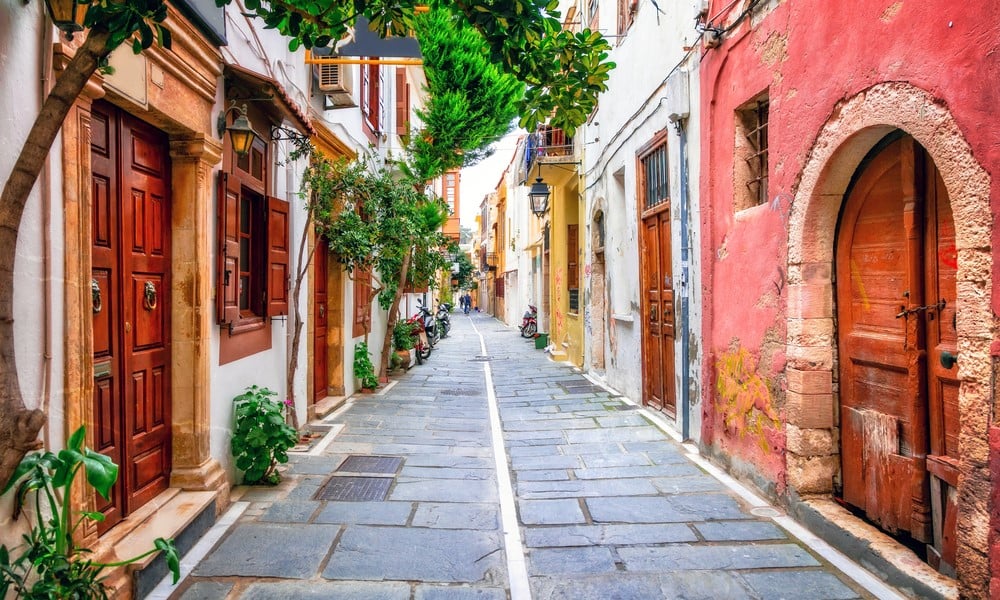
An island is generally something small. But Crete can hardly be called an island; it is more like a small country, like Malta or Sri Lanka. The capital of Crete is Heraklion, but most tourists prefer the more resort-like Chania or the festival town of Rethymnon. However, there are many small cozy spots scattered across the island, connected to larger cities by excellent bus services.
You can’t see all of Crete in one trip; the island is simply too large. But must-see points include the “blue” Balos Lagoon in the northwest part of the island, the Knossos Palace, where the legendary Minotaur dwelled in its labyrinths, the picturesque 18-kilometer Samaria Gorge, which has Crete’s most famous hiking route, the resort town of Agios Nikolaos, the Elafonisi beach with pink sand and the nearby Chrysoskalitissa Monastery, caves near the village of Matala, where one of the largest hippie communities in the world lived in the 1960s. Even rock stars like Bob Dylan and Joni Mitchell were spotted among the cave dwellers. No one lives in the caves now, but they have become a popular tourist attraction.

